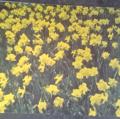Stephanie Jane reviewed A Woman by Erica Segre
An important part of the feminist canon
3 stars
Sibilla Aleramo is widely acclaimed as Italy's first feminist author with her autobiographical novel, A Woman, being, I think, her best known work so when I spotted this new Penguin English language publication I knew I had to read the book, if only for its historical significance. Happily, I felt that the writing had aged well. I was strongly reminded of Caroline Norton's real-life battle (to gain access to her children after finally leaving her marriage) some seventy years earlier in 1830s England, which I learned about through reading Roaring Girls by Holly Kyte and Difficult Women by Helen Lewis. It's both amazing and depressing to realise that A Woman was first published 114 years ago - amazing that I am able to read and relate to Aleramo's words after such a long time has passed; depressing that there are still women trapped in identical situations today.
In A Woman, …
Sibilla Aleramo is widely acclaimed as Italy's first feminist author with her autobiographical novel, A Woman, being, I think, her best known work so when I spotted this new Penguin English language publication I knew I had to read the book, if only for its historical significance. Happily, I felt that the writing had aged well. I was strongly reminded of Caroline Norton's real-life battle (to gain access to her children after finally leaving her marriage) some seventy years earlier in 1830s England, which I learned about through reading Roaring Girls by Holly Kyte and Difficult Women by Helen Lewis. It's both amazing and depressing to realise that A Woman was first published 114 years ago - amazing that I am able to read and relate to Aleramo's words after such a long time has passed; depressing that there are still women trapped in identical situations today.
In A Woman, our narrator marries in ignorance at sixteen having convinced herself that the man who raped her must have done so for love and, now that he has 'made her a woman' she is obliged to stay with him. Caught between a cultural tradition that teaches women should be satisfied with just home, children and church, and subject to her controlling husband's increasingly frequent paranoia and violence, the Woman (who is really still emotionally a child herself) withdraws into herself. She shows clear signs of what we would recognise today as PTSD and depression, which grow worse as she is forcibly confined to one room in her house, a situation eerily similar to that in Charlotte Perkins Gilman's The Yellow Wallpaper although at least here the Woman does have her infant son in whom to confide and the decor is pleasing.
A Woman veers between descriptions of daily life and philosophical musings on the role and purpose of women, both of which I found interesting, however these aspects are padded out with a lot of self-centered woe-is-me introspection that soon became just a little tiresome. I do appreciate that rushing depressed people is not remotely helpful, and A Woman accurately portrays her fluctuating descent into a very dark mental place. Unfortunately, for this heartless reviewer anyway, too much repetitive detail doesn't make for good fiction. There is a long section in the middle where the Woman reflects on her predicament and the penny drops that she is reliving her mother's life (her mother has been driven to an asylum by this point). She yo-yos between desperately needing to grasp intellectual independence for her own sanity while being equally desperate not to abandon her young son. Because, of course, she cannot legally rescue both herself and her child. He is his father's property and the father stakes personal pride far above his son's emotional well-being.
I am glad to have had this opportunity to read A Woman. I believe it is an important part of the feminist canon and should easily be as well known as The Yellow Wallpaper or The Awakening by Kate Chopin. Aleramo's questioning the assumption that marriage and, especially, motherhood should so take over women's lives that they have nothing left of themselves is still an extremely relevant and vital discussion today. A Woman does show its age in its style, but I appreciated how this novel simultaneously shows how far women have advanced and how much is still unchanged from this snapshot of life over a century ago.

